#Aomori destinations
Text
MUy5gX
CLICK HEAR TO HAVE SOME FUN!

#hokkaido trip#reeltoreeltapedeck#reeltoreelrecorder#digital signature#its me talking#situs karoseri#rinuka#aomori destinations#kasdraws#terra ignota
0 notes
Text

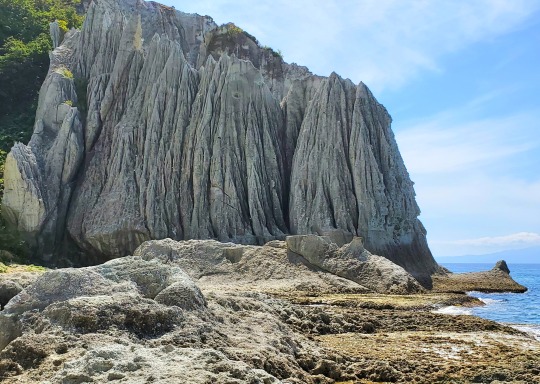


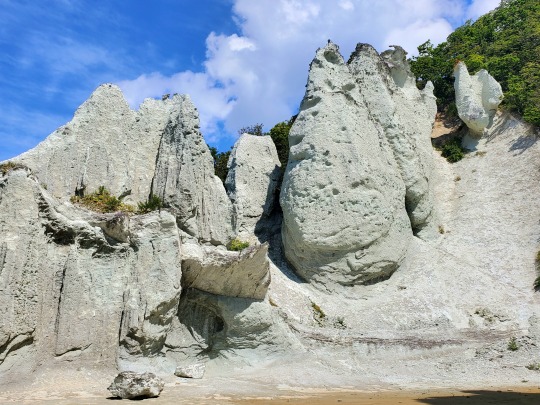

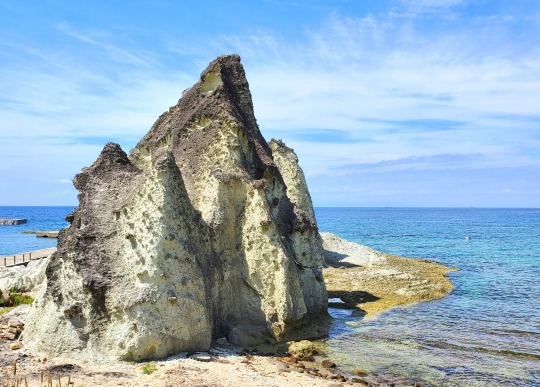



Hotokegaura - Mutsu Bay Aomori
After driving around the west coast of Aomori, we took a ferry to the Shimokita Peninsula at the entrance of Mutsu Bay which is on the northeastern side of the prefecture. The peninsula is the most northern point of Honshu and is full of amazing places and scenery.
Along the western coast of the peninsula is Hotokegura, a two kilometre stretch of coastline filled with crazy-shaped, 100 meter tall white rocks and cliffs that have been eaten away by the rough coastal waves and winds. Hotoke means Buddha, and gaura, bay so the area is known as the Buddha Bay as many of the formations are said to resemble Buddhist disciples.
The beach is a steep one-kilometer climb from the car park, going down isn't too bad, but on a hot day it was a slow climb with several stops before we reached our car, but worth every step!
The color of the water and the height of the rock formations were truly magnificent, and unlike any other place in Japan, we have visited.
#aomori#hotokegarura#mutsu bay#仏宇多#japan#country life#touring#buddha#beach#japan travel#japan destinations#national treasure
57 notes
·
View notes
Photo
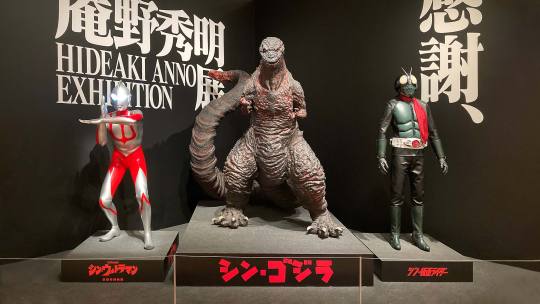
Event: Hideaki Anno Exhibition @ Aomori Museum of Art
An event in Japan for fans of Hideaki Anno.
Follow us for more Tech Culture and Lifestyle Stuff.
#Aomori Museum of Art#Exhibition#Hideaki Anno#Holiday Destination#Leisure#Museums#Shin Japan Heroes Universe
5 notes
·
View notes
Text
Review: The Makanai: Cooking For The Maiko House - Episode 1
I’ve been getting a TON of asks for me to review Maiko San Chi No Makanai San’s new live action adaptation, so now that I’ve had some time to finally sit down and watch it I can do just that!
Episode 1: Change
The show starts out in Aomori where Kiyo and Sumire are departing for Kyoto and are seen off by Kiyo’s grandmother and Kenta, their friend from school. This happens in the manga and the anime as well, but the show adds a line about Sumire’s parents not showing up because her father didn’t approve of her becoming a maiko. I honestly never questioned why Sumire’s parents were never at the station before, but that line actually makes the whole thing make sense now!
Next we’re whisked off to Kyoto where, upon arriving in Gion Kobu, Kiyo and Sumire almost immediately run into maiko, who are played by none other than Mameaya of Ninben and Mami of Minoyae! On their way to their destination they spot even more maiko, who are Nanoha, Mameju, and Yuzuha of Tama! I really enjoyed the cameos and I bet the real maiko enjoyed playing themselves too. From there they meet the two okasan of the Saku yakata (the show uses the term yakata instead of okiya, so I’m also going to use the term yakata from now on), Azusa and Chiyo. This is a slight deviation from the manga and anime where there was only one okasan and they all just called her “okasan��� instead of giving her an actual name. The girls then go to settle into their new digs when they’re confronted by one of the other girls who lives there, Ryoko, who quite rudely tells them that they’re not cut out for this and that they’ll quit soon enough (what a bitch :O!).
It then skips ahead three months to the day where the yakata is changing out the sliding doors for summer, and the local otokoshi have come to help out. It’s here that we first get to meet the makanai of the Saku yakata, Sachiko. She’s a middle aged woman who’s brought ingredients to make everyone in the house some fresh somen noodles to cool everyone off on a hot day. It’s here that we’re first introduced to what a makanai is and Sachiko’s physical problems that ail her. After the lunch is over Kiyo tries to help massage Sachiko’s back, but things go awry when Sachiko ends up putting her back out when she tries to get up off the floor of the yakata. This spells the end of Sachiko’s time as the makanai for the Saku yakata.
We then cut to lessons at the Nyokoba, where Kiyo isn’t exactly a master of flower arranging (her arrangement seems to just flop over), then to drum lessons where Kiyo can’t hold a beat to save her life, and then onto dance lessons where Kiyo just can’t keep up, to the point where she’s told to go sit off to the side by the dance teacher as she’s interrupting the lesson. Poor Kiyo is even reprimanded after the lesson and is made to question whether she should keep pursuing the career of a maiko or not. However, all Kiyo can think about during the exchange with the dance teacher is the teacher’s udon noodles (I’m guessing that they did this to show a pattern between Kiyo and food, but it did feel slightly odd). Sumire and Kiyo then walk home together and Sumire is clearly worried for her friend, but Kiyo just shrugs it off like the meeting with the dance teacher meant nothing at all.
Back at the yakata the maiko of the house are getting dressed and some explanation is given as to what they wear for certain months of the year. Kiyo’s clumsiness leads to Sumire taking over to help the otokoshi get the maiko dressed and following after the otokoshi to go help them dress a geiko called Momoko. In the manga and the anime Momoko is (spoiler) the onesan of Sumire once she debuts as a maiko, but we never actually meet her. Here she shows up in episode one, so we know that she’s meant to play an integral part in the show somehow going forward. Sumire follows Momoko around for the night like shikomi often do and is at one point rewarded by asking if she’d like to watch an ozashiki that Momoko will be performing at. It’s here that we can see Sumire’s passion for the profession as she watches Momoko dance and you just know that Sumire wants to dance like Momoko someday.
The next day, Kiyo goes to visit Sachiko in her apartment and cooks tomato curry for her, while Sachiko explains the secret to being a makanai: that you have to be able to cook something that will satisfy everyone’s taste buds since the residents of the yakata come from all over Japan and have grown up with different seasonings. Kiyo takes this to heart and returns to the yakata, where at night a mysterious phone call is answered by Chiyo and the episode ends.
So far I’ve really liked the show and while it’s taken some deviations from the manga and anime, it’s likely to explain them in the future, so I look forward to checking out the rest of the series ^^!
#makanai#the makanai cooking for the maiko house#maiko-san chi no makanai-san#kiyo in kyoto: from the maiko house
43 notes
·
View notes
Note
20 for Adrigami

20. Where do they go on holidays?
I can easily see these two having 2 spots/destinations where they like to go and stay.
One in Japan, in Aomori, and the other in France, in Biarritz. I can see them liking mountains better than the sea, but they're happy to have both near their vacation home/hotel. They choose these because they are very good destinations to relax and unwind, and still have things to do so they don't stay idle.
#miraculous ladybug#ask#saemi answers#adrien agreste#kagami tsurugi#adrigami#not my fav pairing#but it's cute to imagine
3 notes
·
View notes
Photo
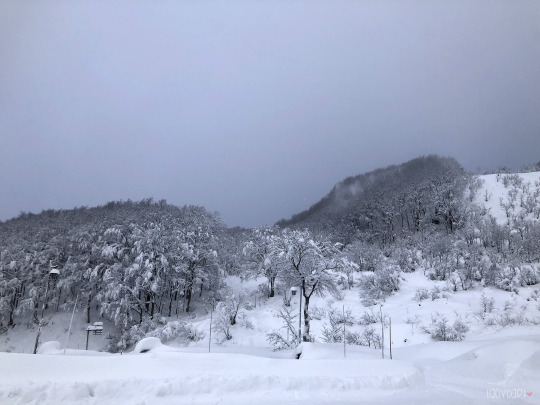
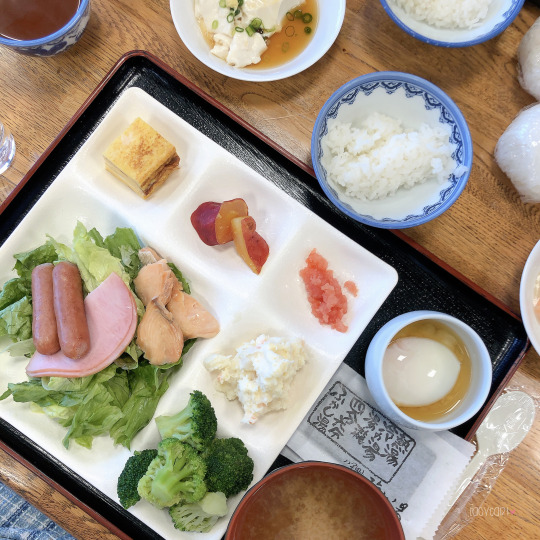


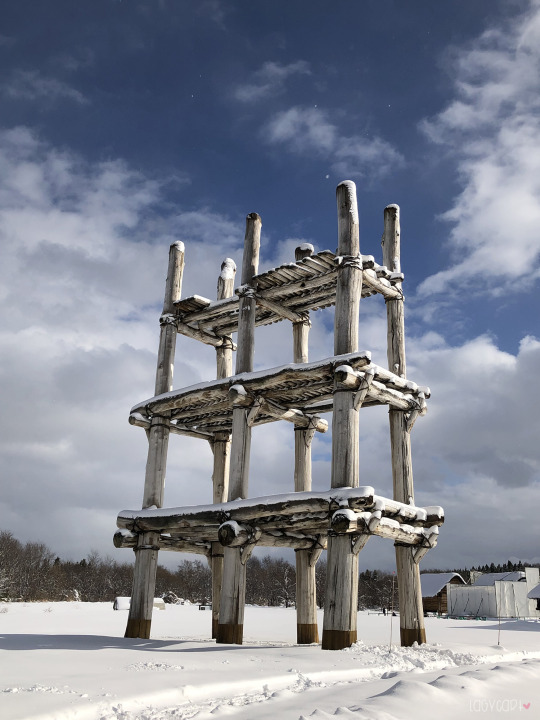

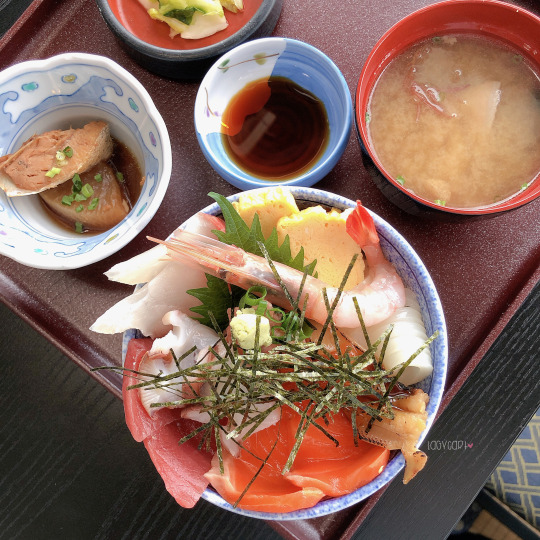



tokyo tohoku trip - day 3.
after a good night sleep, we woke up to really beautiful snow view at the resort, this snowy scene never gets old. and of course we enjoyed the onsen once again, it was just so so amazing. we had breakfast at the resort’s restaurant which is japanese buffet style, and they use many local ingredients as well. i love the variety and all the food is really fresh and taste so delicious, i ate quite a lot and was fully stuffed and satisfied.
played in the snow again for a bit because it’s a rare chance and i really enjoyed it. XD while waiting for the next bus, we also had coffee and coffee jelly soft serve and just chill at the lounge area which is relaxing and comfortable. the bus ride going back to town is lovely, there’s less snow in town of course, and we arrived at our next destination with really nice weather without any snowing.
sannai maruyama ruins 三内丸山遺跡 is a popular tourist attraction in aomori, and it looks beautiful with lots of history to learn, hence we decided to visit the place to just walk around. they do have free guided tours but the timing wasn’t very suitable so we just roam around ourselves which is totally fine too.
the place has a indoor section which plays movie (in japanese) and display some artifacts with description, but the outdoor section is the gem, and it’s just so beautiful. my friend visited this place many times but never once when it is covered in snow, and she love the view as well. the outdoor site has lots of buildings that you can get into, to see the actual site of the ruins and artifacts, and the structures are beautiful in its own way and great for photos. it was an awesome walk, definitely highly recommended.
we decided to go to ASPAM アスパム that is nearby aomori station for lunch, there’s a japanese restaurant with a great view of the bay area on the 10th floor - michinoku cuisine nishimura みちのく料理 西むら. we ordered their set meals which is mainly seafood. i had the baked hotate with egg, fish soup and hotate sashimi with rice and pickles. my friend ordered the kaisen don which has so much fresh seafood on rice. the food here is really good, seafood is fresh and taste is so appetizing, it was so satisfying, and the bonus is the great view outside the window which is calming.
after lunch, we head to aomori station as we need to take the local train to misawa station for our next hotel for the night - hoshino resorts aomoriya 星野リゾート 青森屋. this resort is one of many resorts under hoshino group of hotels, and this place has lots of unique activities you can do during your stay, besides food and onsen. the resort does pick us up from the station which is very convenient.
the resort area is quite beautiful with a lot of greens and flowers and trees. there’s an entire area filled with many things like shops, games, an izakaya, a performance show, and an apple juice tap, which taste really nice. the shop has lot of local souvenir variety, but it’s definitely slightly more pricey. we couldn’t catch the performance as all seats were already booked. but the nebuta float decorations are still beautiful to look at.
we took a short rest in our spacious hotel room before going to dinner. dinner was awesome, it’s buffet style and half of the food is cooked freshly at each stall, which is so good, the smell increase our appetites and everything truly taste good. i enjoyed so much of sashimi, grilled seafood, tempura, vegetables, and many other japanese dishes. for some reason, japanese buffet is very enjoyable and the variety just makes me happy. it was definitely a very satisfying meal, and i discovered i really liked apple tempura so much, didn’t expect that.
after a fulfilling dinner, we decided to take a walk outside the pond area, it’s litted with japanese style lanterns, there’s also a foot bath in the area, with a shrine in the middle of the pond with beautiful light up nebuta decorations. it was a very peaceful and relaxing walk, even if it is dark, but it just feel so comfortable with the beautiful night view, we also got to see stars in the sky, which is impossible in the city, that made me feel so good.
the night is not complete without a relaxing bath in the onsen, there’s an outdoor onsen in this resort, with a view of a nebuta float, how amazing is that. while the onsen was quite crowded, it still feels so good and comfortable as the onsen is quite spacious. the bath amenities is also very complete, so it’s super convenient. i love outdoor onsen so much because the bath is hot but the air is cooling, it’s super comfortable and relaxing and you get to stay in the hot spring so much longer. a relaxing hot spring is the perfect way to end the night for a good night sleep.
to be continued...
#lagycart travels#lagycart in japan#aomori#day 3#onsen#hot spring#buffet breakfast#japanese style#local ingredients#eat what you like#fresh#so good#yummy#stuffed#satisfying#enjoyable#japanese food#coffee jelly#soft serve#relaxing#lounge#play in snow#snow view#sanmai maruyama ruins#三内丸山遺跡#history#jomon#structure#outdoor#good weather
5 notes
·
View notes
Text
The Best Time to Visit Japan: Experience the Seasons of the Land of the Rising Sun
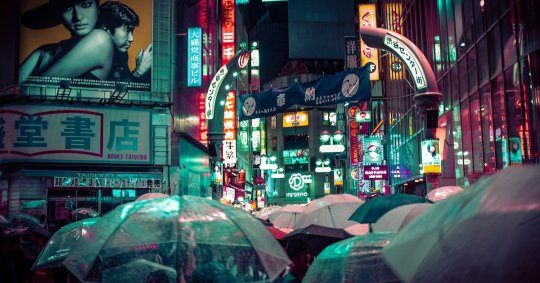
Japan is a land of captivating contrast, where ancient traditions meet modernity and serene landscapes blend with bustling cities. The country's special excellence is complemented by its steadily evolving seasons, making it pivotal to pick the perfect opportunity to visit. Each season offers distinct experiences, from the iconic cherry blossoms of spring to the stunning autumn foliage and the excitement of summer festivals. This guide will help you decide when the best time is to visit Japan.

Springtime in Japan: Cherry Blossoms and Golden Week (April to May)
Cherry Blossom Season (late March to early April)
Japan's cherry blossom season, or sakura, is without a doubt one of the most captivating normal shows internationally. This ephemeral wonder blankets the nation in delicate shades of pink, turning parks, gardens, and moats into dreamlike landscapes. Join the annual Hanami tradition of picnicking under the cherry blossoms, though be prepared for crowds. The timing varies, but visiting in April along the "Golden Route" offers a good chance of witnessing the bloom.
Golden Week (early May)
Early May marks Golden Week, a series of national holidays celebrated with enthusiasm. The warm and sunny weather lures travelers, but it also leads to a surge in prices and crowds. Hotel and flight bookings should be made well in advance, as public transport, city streets, shrines, temples, and museums become packed with sightseers.

Summer in Japan: Climbing Mt. Fuji and Vibrant Festivals (July to August)
Climbing Mt. Fuji (July to August)
The summer months provide a unique opportunity to ascend Japan's iconic peak, Mt. Fuji. The official climbing season spans July and August, promising clear skies and spectacular views. While the climb requires preparation, the reward of watching the sunrise from the summit is unmatched. For those not inclined to scale a mountain, several alternatives allow you to experience Fuji's majesty from a distance.

Summer Festivals (August)
August is the season of Natsu Matsuri, or summer festivals, bringing a vibrant cultural experience to Japan. Dance festivals like Awa Odori and Hanagasa Festival showcase choreographed dancers in traditional attire parading through the streets. Witness Obon, a Buddhist festival celebrating ancestors, marked by food, dance, and lanterns. In cities like Tokyo, Nagaoka City, and Aomori, fireworks displays light up the skies.
Autumn in Japan: Fall Foliage and Harvest Delights (September to November)
Fall Foliage (September to November)
Autumn, or Koyo season, paints Japan in rich hues of red, orange, and gold. The nation's picturesque landscapes transform into natural artwork with the transition of leaves from green to vivid colors. Prime destinations for koyo hunting include Osaka Castle, Bishamon-do Temple in Kyoto, and Momijidani Garden in Wakayama. The cool November air increases the chances of witnessing snow-capped Mt. Fuji.
October: Harvest Season and Food Tours
October introduces the harvest season, making it an ideal time for culinary enthusiasts. Picking fruits like persimmons, chestnuts, and Japanese pears on farms is a delightful experience. The Takayama region hosts Japan's third-largest festival, the Takayama Autumn Festival, with marionettes, parades, and regional delicacies. Treat your taste buds to local specialties such as mitarashi dango, houba miso, and chuka soba.
Winter in Japan: Skiing, Snow Festivals, and Illuminations (December to February)
Skiing and Snowboarding (December to February)
Japan's winter months are a haven for skiers and snowboarders, featuring some of the planet's finest powder snow. Ski resorts across the country cater to all skill levels, providing a diverse winter sports experience. To make the most of your ski trip, plan in advance and explore the enchanting world of Japanese snow.

Winter Holidays (December)
December sets the stage for enchanting illuminations and the unique way Japan celebrates Christmas. Throughout the month, cities are adorned with sparkling lights to welcome the holiday season. While Christmas isn't a traditional Japanese holiday, it has gained popularity, with locals embracing the festive spirit. To experience an unconventional Christmas, indulge in Kentucky Fried Chicken (KFC) dinners, a local tradition.
Choosing the Right Time to Visit: A Personal Journey Through Japan's Seasons
When planning your journey to Japan, several factors must be considered. Weather and climate, personal interests, travel objectives, and budget play crucial roles in determining the ideal time for your visit. Each season offers something unique, so choose the one that aligns with your preferences.
From the enchanting cherry blossoms of spring to the exhilarating summer festivals, the serene autumn foliage, and the winter wonderland, Japan's seasons ensure that every visit is a distinct experience. Embrace the ever-changing beauty of this remarkable nation, and plan your adventure accordingly.
Monthly Breakdown
April: Sakura Blooms and Hanami Delights
April is the prime month for cherry blossom viewing. The cherry blossoms, or sakura, normally make their terrific entry in late March and early April. The famous "Golden Route" along Japan's east coast welcomes the blooming trees, creating a breathtaking spectacle. This month, known for hanami, is when locals and visitors alike enjoy picnics beneath the cherry blossoms, creating a festive atmosphere. Crowds gather in parks, gardens, tree-lined brooks, and castle moats to partake in this timeless tradition.
May: Golden Week and Crowds
May is the beginning of Golden Week, a period of multiple national holidays. With warm and sunny weather, it's a time of celebration. Japanese people take advantage of this festive season with time off work and school, leading to free entry at many museums, parks, and attractions. However, the surge in travelers results in crowded cities, higher hotel and flight prices, and congestion at popular tourist spots.
July to August: Conquering Mt. Fuji and Natsu Matsuri
In July and August, the official climbing season for Mt. Fuji commences. These months offer climbers the opportunity to witness the sunrise from the summit of Japan's iconic peak. While scaling Mt. Fuji is challenging, the reward is the unparalleled view.
Summer festivals, or Natsu Matsuri, come alive in August. Awa Odori and Hanagasa Festivals feature choreographed dancers parading through the streets in vibrant traditional attire. These lively celebrations provide a unique cultural experience amidst the energetic ambiance.
September to November: Koyo and Autumn Delights
As summer transitions to fall, Japan undergoes a remarkable transformation. The arrival of autumn, known as Koyo season, blankets the country in vibrant hues of red, orange, and gold. It's during this time that leaves transition from green to striking colors, creating picture-perfect landscapes. Top spots for admiring the fall foliage include Osaka Castle, Bishamon-do Temple in Kyoto, and Momijidani Garden in Wakayama.
October is the season of harvest, offering food enthusiasts the opportunity to enjoy fruit-picking experiences on farms. Travelers can harvest persimmons, chestnuts, and Japanese pears, immersing themselves in the harvest season. The Takayama Autumn Festival takes center stage, featuring parades, regional delicacies, and marionettes.
December to February: Winter Adventures and Illuminations
Winter is the season for ski enthusiasts. Japan's ski resorts offer pristine powder snow, catering to skiers and snowboarders of all skill levels. Whether you're a seasoned pro or a novice, Japan's winter sports destinations provide a memorable experience amidst the snow-covered landscapes.
December brings enchanting illuminations that adorn Japan's cities. To celebrate the holiday season, sparkling lights transform streets into magical wonderlands. Although Christmas isn't a traditional Japanese holiday, it has gained popularity. Locals celebrate with KFC dinners—a unique Christmas tradition.
Each month in Japan offers its own unique charm and experiences, so plan your visit according to your preferences and the adventures you seek. Whether you wish to witness cherry blossoms, embrace the fervor of summer festivals, enjoy the serenity of autumn foliage, or explore winter wonderlands, Japan's ever-changing seasons have something exceptional to offer every traveler.
Activities, Things to Do, and Events in Japan
Spring: April to June
- Hanami (Cherry Blossom Viewing): In April, join locals in the traditional practice of hanami, picnicking beneath the blooming cherry blossoms. Popular spots include Tokyo's Ueno Park and Kyoto's Maruyama Park.
- Golden Week Celebrations: May brings Golden Week, a time of celebration with various events and festivals. Witness traditional Japanese dance at the Awa Odori Festival in Tokushima or the Hanagasa Festival in Yamagata.
Summer: July to August
- Climbing Mt. Fuji: In July and August, conquer the iconic Mt. Fuji. The official climbing season offers the chance to witness an awe-inspiring sunrise from the summit.
- Natsu Matsuri (Summer Festivals): Experience the vibrancy of Natsu Matsuri in August. Dancers don traditional attire and parade through the streets at festivals like Awa Odori and Hanagasa.
Fall: September to November
- Koyo Viewing: Fall is the season of Koyo, or autumn foliage, when leaves transition to stunning hues of red and gold. Visit the iconic Osaka Castle and other scenic spots for the best leaf-peeping experience.
- Harvest Season Adventures: From October on, engage in fruit-picking experiences on farms. Harvest persimmons, chestnuts, and Japanese pears while embracing the harvest season. Don't miss the Takayama Autumn Festival, with parades and regional delicacies.
Winter: December to February
- Skiing and Snowboarding: Winter is the best season for skiing and snowboarding in Japan. Explore world-class ski resorts with pristine powder snow in picturesque settings.
- Illuminations: December is the time for enchanting illuminations across Japanese cities. Enjoy the holiday season by strolling through streets adorned with sparkling lights.
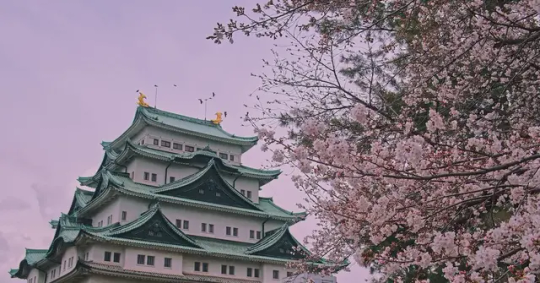
Year-Round Attractions
- Sakura Festivals: All year round, explore numerous Sakura festivals that celebrate the cherry blossoms. From traditional hanami gatherings to larger events like the Ueno Cherry Blossom Festival, you can enjoy the beauty of sakura in various forms.
- Hot Spring Soaking (Onsen): Japan offers countless hot springs to relax and unwind throughout the year. Whether it's winter or summer, a soothing soak in an onsen is a quintessential Japanese experience.
- Cultural Experiences: Immerse yourself in Japan's rich culture with activities such as tea ceremonies, sake tasting, and traditional dance performances. These cultural experiences are available year-round and offer insights into Japan's heritage.
- Year-Round Festivals: Japan hosts a wide range of festivals throughout the year. Whether it's the grandeur of Gion Matsuri in Kyoto or the raucous atmosphere of Kanamara Matsuri (Festival of the Steel Phallus) in Kawasaki, there's always a festival to attend.
Japan's occasions and exercises are pretty much as different as its seasons, guaranteeing there's something for each explorer, no matter what the season. Whether you prefer nature's beauty or cultural experiences, Japan's calendar is brimming with opportunities for exploration and enjoyment.
Conclusion
In conclusion, Japan's seasons offer diverse experiences, so selecting the right time to visit is vital. Each season has its own unique charm, from cherry blossoms in the spring to fall foliage and thrilling summer festivals. By understanding Japan's seasons and your own inclinations, you can guarantee that your excursion to the place where there is the rising sun is essential and captivating.
Read More : Unlocking the Perfect Time for Your Maldives Escape: The Best Time to Visit Maldives
FAQ's
What is the best month to go to Japan? The best month to visit Japan largely depends on your preferences. For cherry blossoms, plan your trip for April. If you prefer autumn foliage, visit from October to November. Winter is perfect for skiing, and summer is great for hiking. Choose the season that aligns with your interests. What is the best month to visit Japan not crowded? To avoid crowds, consider traveling in the shoulder seasons. May is quieter than cherry blossom season, while October to March typically sees fewer tourists. To further avoid crowds, venture into southern Japan, where it's less touristy even during peak periods. How many days in Japan is enough? The ideal duration for a Japan trip depends on your destinations and interests. A week is suitable for exploring a single region like Tokyo and Kyoto. For a comprehensive visit, aim for two weeks or more to cover multiple cities and immerse yourself in Japan's diverse culture. What is the best month to travel to Tokyo, Japan? April is a great time to visit Tokyo, as it aligns with cherry blossom season and offers pleasant weather. Alternatively, June and September are less crowded, with milder temperatures than the peak summer months. Tokyo is vibrant throughout the year, so it ultimately depends on your preferences.
Read the full article
0 notes
Text
Ohayo! If you’ve been daydreaming of stepping into a land where delicate, pink petals rain from above and blanket the ground below, you're in the right place. Japan, home of the magical phenomenon known as 'sakura', never ceases to captivate with its iconic cherry blossom season. Get ready to venture with me through the top ten locations for the cherry blossom spectacle.
1. Yoshino, Nara
Our first pit-stop, Yoshino, is a stunning mountainous region awash with over 30,000 cherry trees. Yes, you read that correctly! Can you imagine a better way to commence your cherry blossom chase?
2. Shinjuku Gyoen, Tokyo
Next, we swing by the heart of Tokyo, landing at Shinjuku Gyoen. The park hosts not just one, but multiple varieties of cherry trees. No matter when you arrive during the season, you'll catch some blossoms in their prime.
3. Hirosaki Castle Park, Aomori
Famed for its vibrant Sakura Matsuri (Cherry Blossom Festival), Hirosaki Castle Park is the stuff dreams are made of. The castle, pond, and of course, breathtaking cherry blossom trees make perfect postcard material. Don't forget to spot petal-filled boats gently floating on the castle's moats!
4. Ueno Park, Tokyo
A combination like no other – Ueno Park houses both stunning sakura trees and intriguing museums. An afternoon under the cherry blossom canopy here is time well spent.
5. Himeji Castle, Hyogo
Majestic is the word when we talk about Himeji Castle during sakura season. The striking white castle surrounded by cherry blossoms creates an ethereal scene that belongs on the canvas of a master painter.
6. Maruyama Park, Kyoto
Kyoto, Japan's old capital, invites visitors to Maruyama Park to see Japan's most famous (and huge!) weeping cherry tree. Trust me, it's a sight to behold, especially at night when it's illuminated against the dark sky.
7. Lake Kawaguchi, Fujikawaguchiko
At Lake Kawaguchi, you get two Japanese wonders in a single frame - the enchanting Mt. Fuji backdrop to your cherry blossom viewing! This picturesque destination is a gem you should definitely add to your bucket list.
8. Osaka Mint Bureau, Osaka
Osaka Mint Bureau with its cherry garden will be your love-at-first-sight spot. Only open for one week in April, it parades late-blooming yaezakura trees, featuring blossoms with more petals than the common somei yoshino trees.
9. Kanazawa Castle, Kanazawa
Kanazawa Castle, another location where enchanting sakura landscapes weave magic. The Kenroku-en Garden located next to the castle is a spectacle of mellow pink and white hues of cherry blossoms in spring.
10. Takato Castle Park, Nagano
Ending our list on a high is Takato Castle Park, no less than a grand finale for your sakura pursuit. Renowned as one of Japan's top three cherry blossom spots, it's truly a paradise for sakura lovers.
Setting out on this cherry blossom journey is like stepping into a sensory painting of delicate pinks and whites, lively outdoor festivals, and joy-filled 'hanami' picnics. So brace yourself, Japan's iconic sakura season waits for no one. Gear up, and hop on this ethereal journey that celebrates the transient beauty of nature. And remember, as the cherry blossoms teach us, life is breathtakingly beautiful, but it is also incredibly fleeting, so enjoy every moment!FOLLOW FOR MORE WWW.AABEE.IN
0 notes
Photo

津軽半島
青森の名所
津軽半島(つがるはんとう)は、青森県の最北端に位置し、津軽海峡に突き出した半島です。その特徴と魅力を以下に挙げます。
1. 自然の美
豊かな自然が広がり、山々や海岸線、田園風景が特徴です。特に秋の紅葉や海の景色が美しく、四季折々の風景を楽しむことができます。
2. 観光地
津軽半島には魅力的な観光地が点在しており、大鰐温泉や五所川原市の観光地、西津軽郡の海岸沿いの風景などが人気です。
3. 歴史と文化
津軽地方は歴史や伝統文化が豊かであり、津軽三味線や津軽弁といった地域独特の文化が根付いています。また、津軽の城下町や歴史的建造物も見所です。
4. 食文化
海に近い立地から新鮮な海産物が豊富であり、特に津軽海峡を渡って北海道から流れ着く「津軽富士」と呼ばれる魚介類が有名です。
5. アクティビティ
自然環境を活かしたアウトドアスポーツや釣り、温泉など、様々なアクティビティを楽しむことができます。
♪♫♬🎤🎹🎶♪♫♬🎤🎹🎶♪♫♬🎤🎹🎶♪♫♬🎤🎹🎶
Tsugaru Peninsula
Aomori famous places
Tsugaru Peninsula is located at the northernmost tip of Aomori Prefecture and is a peninsula that juts out into the Tsugaru Strait. Its features and charms are listed below.
1. Natural beauty
It is surrounded by a rich natural environment, characterized by mountains, coastlines, and rural landscapes. The autumn leaves and sea views are especially beautiful, and you can enjoy the scenery of each season.
2. Tourist destinations
The Tsugaru Peninsula is dotted with attractive sightseeing spots, such as Owani Onsen, Goshogawara City, and the coastal scenery of Nishi-Tsugaru District.
3. History and Culture
The Tsugaru region is rich in history and traditional culture, and unique local culture such as the Tsugaru Shamisen and Tsugaru dialect are deeply rooted. Tsugaru's castle town and historical buildings are also worth seeing.
4. Food culture
Due to its location near the sea, there is an abundance of fresh seafood, and it is especially famous for the seafood called ``Tsugaru Fuji'' that crosses the Tsugaru Strait from Hokkaido.
5. Activities
You can enjoy a variety of activities that take advantage of the natural environment, such as outdoor sports, fishing, and hot springs.
0 notes
Text
Hirosaki - Finding One of Japan's Last Original Castle
Hirosaki makes a good day trip from Aomori.
#livelifelove #Aomori #Japan #travelogue #wintertales #snowscape #cityscape #Asamushi #onsen #introvertedtravellers
Aomori prefecture is an oft-overlooked tourist destination, much less Hirosaki. At a 45 minute train ride away from Aomori city, it was an even smaller city, but with a castle!
When planning for the northern Japan holiday, we understood that most of the vacation would be covered by day trips. Aomori city, being a key transport node in northern Honshu, was a “base city” to explore the bigger…

View On WordPress
#Asia#Castle#foodie#Hirosaki#Hokkaido#introvert traveller#Japan#JR Train#live life love#onsen#Singapore#travel guide#travelogue#winter wonderland
0 notes
Text
Travel Japan - New Itineraries of 2023 - EVERY DAY ONE NEW SECTION RELEASED!
🌟 Uncover Japan's Hidden Treasures! 🌟
Japan, a land of captivating contrasts, has more to offer than meets the eye. Beyond the well-trodden tourist paths, a world of hidden gems and unique experiences awaits. Join us on a journey through our "Japan's Hidden Treasures" itinerary series, where we'll unveil the lesser-known wonders that make this country truly extraordinary.
Tottori Sand Dunes 🏜️ - Delve into the mystical landscapes of Tottori, where you can marvel at the otherworldly Tottori Sand Dunes, one of Japan's best-kept secrets.
Aomori Autumn Foliage Bridge 🍂 - Explore the tranquil Aomori Prefecture, nestled in the northernmost part of Honshu, where pristine beaches, ancient forests, and vibrant festivals await.
Our itineraries will take you on adventures such as hiking through hidden mountain trails, discovering secluded shrines, savoring local delicacies, and immersing yourself in the warm hospitality of rural communities. Whether you're seeking serenity in nature, craving an off-the-beaten-path culinary experience, or yearning for a deeper understanding of Japan's traditions, "Japan's Hidden Treasures" will lead you to remarkable destinations that will leave you enchanted and inspired.
Stay tuned for more exciting themes and itineraries that showcase the diverse beauty and culture of Japan. Your next adventure awaits! 🗾🌸🍜
1 note
·
View note
Text
JALPAC resumes nationwide travel support for 30 prefectures on November 1 at 12:00 pm. Hokkaido/Tokyo/Osaka/Fukuoka, etc.
JALPAC will reopen at 12:00 p.m. on November 1 for nationwide travel support products to destinations in certain regions (30 prefectures below).
Destinations on sale (as of October 31)
Aomori, Akita, Chiba, Shizuoka, Yamanashi, Nara, Hiroshima, Shimane, Tottori, Ehime, Saga, Okinawa
The following products are eligible for the discount.
JAL Dynamic Package (Domestic Air Ticket + Accommodation)
JAL…
View On WordPress
0 notes
Text
Top 5 Japanese Vacation Locations
There are 14 subprefectures in Hokkaido and Kamikawa is definitely arguably the very best sub-prefecture in terms involving popularity among Japan tourists. This element of Japan still retains its Japanese charm. The very best several weeks to come upward this way is in This summer and August, or perhaps even in September. Winter is ok too for anyone who is experience a bit brave and can manage driving on unmarked icy roads together with almost zero presence through your windshield owing to sporadic snowstorms. On my very last trip up, I actually stayed at a place called Ryounnkaku, a hot spring hotel that folks travel from the significantly to experience. It is the kind of sizzling spa that 1 must sit within to appreciate the particular natural surroundings of snow-covered mountains highs.
I have sat with night in a start air bath inside the middle of a snowstorm! kamaboko food don't declare lightly nor must i state it with all the minimum bit of hyperbole, but a reality. I got sitting inside an open atmosphere hot spring health spa in the midsection of a night-time snowstorm to the particular point that I had to wrap my personal face in buy to breathe. No picture was feasible at that moment. Yes. For us this was a holiday of a life time. Where else inside of the world can you go and perform this type of thing?
Nara, our house were impressive. Not any trip to Land der aufgehenden sonne (umgangssprachlich) will be complete until Nara was in your itinerary. The importance of Nara, being the former capital of Japan, is fundamentally one particular of the almost all important centers associated with Japanese culture plus religion. Here in Nara you can find first hand the fusion between two extremely old and venerated religions; Buddhism and Shintoism, the previous getting from away from The japanese, and the last mentioned being of Japan origin. Evidence associated with this union can be found when visiting the temples in and around Nara, where 1 can immediately sees Shinto Shrines on the same environment as temples. Merely travelling Nara, one particular can have a perception of reverence in addition to the timeless beauty of centuries of Western history and lifestyle.
Hakone, a town known mainly for its natural warm spas and lovely scenery, is home to Lake Ashinoko and even Japanese fish muffins. Old Timers specially enjoy stopping by means of here to relive a period when presently there was no tourism. They also create trips here to take pleasure from sweet bean buttocks and fish muffins. The thing I actually like about Hakone is that nevertheless many tourists go here, the town has not was a victim of the ubiquitous tourist barriers found in numerous major vacation areas like Hawaii plus Thailand. You no longer see shop proprietors trying for power their products to you, and haggling is almost unheard of down here. I hope it remains that method. That's probably precisely why I keep coming back again there and exactly why I chose it since a top escape spot.
Niigata, You may or may not have had some sort of chance to see the rugged backbone regarding Minakami, nor the sweetness scattered about typically the northwestern corner regarding the Kanto Region. And you may well have never heard regarding little off the defeated track stations want JR Yubiko subway tunnel station. Probably time is funds for you. Although some say the indicates you determine to get to be able to your destination is certainly not important, which getting there as soon as possible is the best method to complete out and about of your trip, I say, no. I totally disagree. Just how you arrive at your destination is just as a lot a part of your vacation while being at the desired destination. I had assured myself years before that I would attempt this kind of epic 7 hours journey across several of Japan's most pristine backcountry. Convey trains can get to this area in 2 hours and 35 minutes. Here you are at the particular real Japan.
Aomori, Shirakami is an enormously densely wooded area straddling each Aomori and Akita Prefectures in upper Japan on typically the Sea of Okazaki, japan side in the Tohoku Region. The do itself have been acclaimed as a pristine virgin beech woodland preserve. What which means is, for the almost all part, is the fact that is actually untouched by deforestation and heavy structure projects, which is, using the exception regarding a few pavement and interchanges regarding accessibility, the complete forest has unspoiled beauty untouched simply by the scars regarding modern infrastructures and super highways. The virgin beech forest is an UNESCO World Heritage Internet site, home to 100s if thousands involving rare species; one that comes to be able to mind is the black woodpecker, a lovely much larger than average woodpecker found mainly during northern Europe and Shirakami. It's exceptional to see this type of woodpecker in other parts of Japan. Typically the best seasons to see are summer and fall months.
1 note
·
View note
Photo

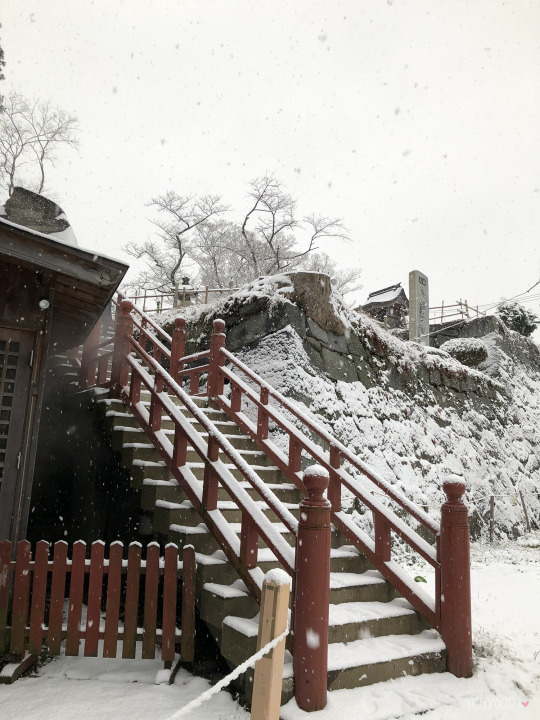
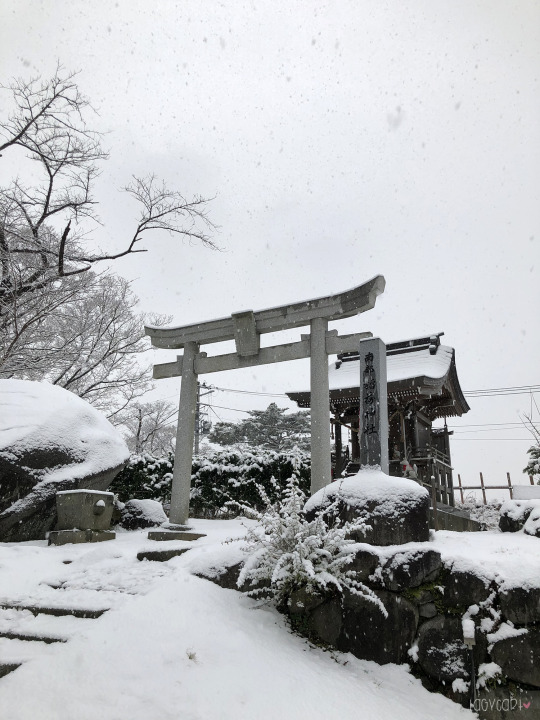


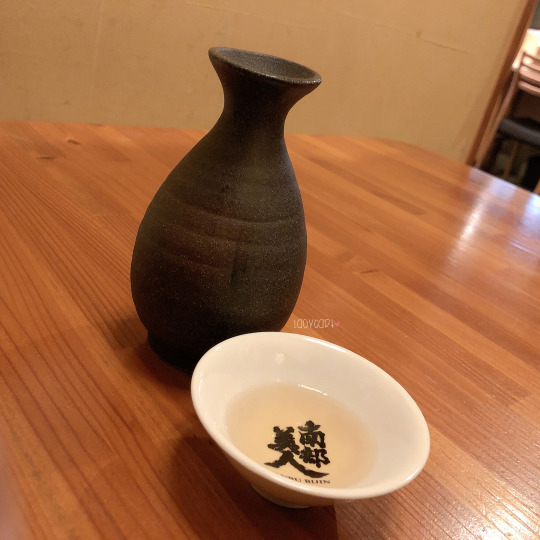

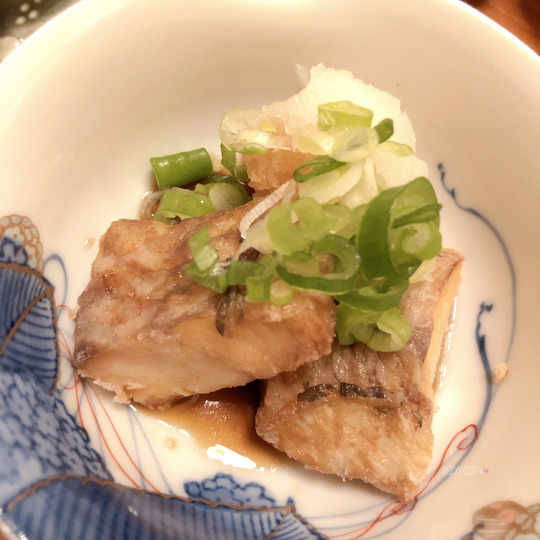


tokyo tohoku trip - day 4.
waking up early morning after a good sleep, we enjoyed another scrumptious buffet breakfast at the resort, i really do love all the food options they offer, japanese variety is just so good, and the western side is amazing too, fresh ingredients and also cooked in very appetizing and delicious ways.
before checking out, we had to also visit the other onsen that is a short walk away from the main buildings, as both my friend and i love onsen so so much, this onsen is an indoor one, and it is also very very comfortable to soak yourself in and just chill. i really can’t get enough of onsen.
our destination is morioka in iwate prefacture, which is south of aomori. the shinkansen ride is comfortable and we were very surprised to still see snow when we arriived, as my friend has lived here many years during her studies, this place almost never snows although the weather gets cold. snow did make the town scenery much more beautiful and aesthetic though.
our lunch place is a popular and iconic noodle place - pairon 白龍 本店, which sells jyajyamen, a variety of black sauce noodles 炸酱面, which originates from china. the noodle they used is thick and fat, has a chewy texture which is enjoyable. they put lots of green onions and cucumber with the meat sauce. meat sauce is quite salty though. mix it all up and you may slurp your noodles away, the store do provide aprons to protect your clothes from the black sauce. when you have about two or three bites left, you may hand your bowl back to the staff and they will add soup to your remaining noodles. it is interesting to see how a simple noodle dish transform in order to allow customers to enjoy the different ways of having noodles. it is worth trying this once as it is one of the three famous noodles in morioka.
after lunch, we decided to stroll around the town, the sakurayama jinja 桜山神社 is just a few minutes walk away and the place is so picturesque and great for photos and just to enjoy the beautiful scenery. the river side view is also amazing, simply covered with lots and lots of snow, it was somewhat calming and relaxing and everywhere you see, it looks like a wallpaper. we visited a local sake brewery 酒蔵あさ開 as well, to get some local sake as souvenir. the staff here is very friendly and we tried a few sake while browsing, they also offer a tour if you make reservation in advance. after getting sake, we went to a cafe to relax, this is one of my friend’s recommendation as her favorite spot, 茶廊車門, we ordered coffee and just chit chat and watch snow from the window. the cafe interior is very old with lots of history, lots of miniature decorations which is interesting.
our last stop before leaving morioka is to have dinner at my friend’s favorite izakaya - MASS~かまどのある家・酒をよぶ食卓~. my friend did make a reservation in advance as space is very limited as well. the izakaya staff is very friendly and nice, we ordered lots of food based on their recommendations - sashimi, meat tartare, steamed vegetables, oden, fried fish, grilled pork, and hojicha ice cream too. the alcohol selection here is mainly japanese sake and soju. during the meal, my friend’s friend also came over to say hi as they have not seen each other for quite a long time, it was a great time chatting and get to know each other, it’s a super interesting and enjoyable night, completely stuffed and satisfied with the good food as well.
taking the shinkansen again, we travel towards south, while my friend is heading back to tokyo as she has some work to take care of, i stopped at sendai to stay a night and explore. i got to my hotel quite easily as i booked a place that is close to the station. then i went to the nearby convenient store to see what food and snacks they have to offer, as this is one of the charms of travelling to japan, visiting the convenient store. i bought some snacks for the night and decided to come back again tomorrow morning to get breakfast since i did see some interesting new food.
heading back to the hotel, the best way to unwind and relax is to soak in the bath. the hotel is really nice to also provide bath powder and other toiletries and coffee and tea options too, and they also provide pajamas which is super convenient, so i don’t have to bring pajamas in my suitcase, it helped to save luggage space.
to be continued...
#lagycart travels#lagycart in japan#tohoku#day 4#morioka#buffet breakfast#onsen#wonderful stay#highly recommended#satifying#stuffed#shinkansen#snowing#beautiful#picturesque#scenery#jyajyamen#白龍 本店#pairon#noodles#meat sauce#transform#soup#black sauce#iconic#popular#local favorite#sakurayama jinja#桜山神社#river
0 notes